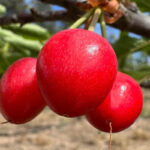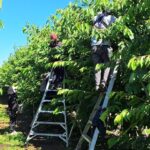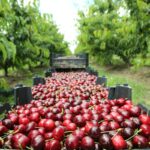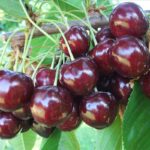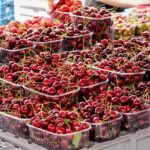How Chileans are exporting cherries to China with cold treatment

The first Chilean cherries have already been shipped and marketed in China. Despite the success of the first shipment, which sold out in 30 minutes, this season presents challenges deriving from the detection of fruit flies which has forced some exporters to go through a cold treatment process to be able to export their cherries.
In this context, Frutas de Chile held the webinar “Preparing the 2024-2025 cherry season under phytosanitary challenges”, in which Claudio Moore, a professional from the Agricultural and Forestry Products Section of the Phytosanitary Requirements for Exports Subdepartment of the Agriculture and Livestock Service (SAG), commented on the quarantine measures for cherry exports to China.
He explained that China established a 27-kilometer radius around fruit fly detection.
“The establishment of phytosanitary restrictions may generate difficulties or modification of the procedures of the normal commercialization process of cherries," Moore said.
Cold treatment for China
Erik León, an agronomist engineer of SAG, explained the specifics of the cold treatment for exporting Chilean cherries to China. He began by saying that it is a quarantine treatment, internationally recognized by different markets as an effective tool for the control of multiple pests, including the fruit fly.
He explained that it is an alternative to more restrictive treatments or measures that are also effective in controlling this pest, such as methyl bromide fumigation.
“The cold treatment consists of exposing the products for a determined time to low temperatures in an uninterrupted manner. The temperature threshold to which the fruit must be subjected and the duration is agreed with the destination market, and based on studies that demonstrate the effectiveness of the treatment to control the pest,” said León.
He said that in the case of China, the treatment corresponds to 15 days and temperatures could not exceed 0.5 ° C, “if the temperature is exceeded the treatment must be restarted and the count of days has to start again,” he explained.
The cold treatment can be applied in cold storage rooms, in ship holds, and sea containers. All three alternatives are viable for the Chinese market.
He added that what is most commonly used today is the cold treatment in sea containers, “which must be self-refrigerated containers, so they must be refrigeration equipment capable of maintaining the required temperatures, have sensors and temperature recorders.”
The sensors must have a degree of accuracy of plus or minus 0.1 on a scale of -3 to 3 ° C, “at this point, it is important to record and store information throughout the treatment period and monitor at least every hour,” said the expert.
Likewise, León commented that once the general treatment is finished, there should be a list that identifies the time and temperature for each sensor that was placed in the container.
Step by step
During the presentation, Erik Leon gave the details of the cold treatment. In that line he argued that first, the pallets have to have been inspected for the destination market; once they are approved the batch that will be treated in the plant is presented. It is there where the inspector has to check the information regarding these approved pallets.
The temperature of the pallets also has to be verified, so, ideally, they are within the range of the treatment to be performed. “So it is very important that plants perform a pre-cold treatment and storage of the pallets before the presentation of these to a cold treatment so that the treatment reaches the treatment temperature as quickly as possible and is also able to lower the temperatures to a treatment range,” Leon said.
He explained that the sensors must be punctured on the fruit in critical positions, which determine the destination market. These are connected to the container so that the information that is detected is stored in the recorders that each container has.
He added that once the sensors have been installed, they must be calibrated, a task that is carried out by the refrigerators and the reading of the sensors must be repeated three times for China, with each reading at least one minute apart.
León explained that, once the sensors have been calibrated, “we have to position them according to the scheme that China requires; the first sensor has to be at the top of the pallet towards the middle row, at the front of the container; the second sensor approximately 2.5 meters from the door to the center of the load, between the top and bottom of the load; and the third sensor should also be approximately 1.5 meters from the door towards the inside on the left wall.”
Update
Erik Leon said that a year ago a new system was implemented, which was developed together with Frutas de Chile regarding digital verification of sensor calibrations for cold treatments to China. “Last year it was implemented with great success for the port of Shanghai and this year it was agreed with China Customs to extend this authorization, to use this system to the ports of Dalian, Shenzhen, and Nanjing.”
He explained that the system consists of taking some photographs of the cold treatment process, which is uploaded to the system. Subsequently, SAG, by a specific profile, validates the photos, so that they finally enter the system and the record is available for China to verify the photographs of the cold treatment.
Finally, he pointed out that thanks to the new system, once the container arrives at its destination, it can be released quickly.
“In this way, we have been able to expedite the entry of containers that go with this treatment to the Chinese market,” said León.

















